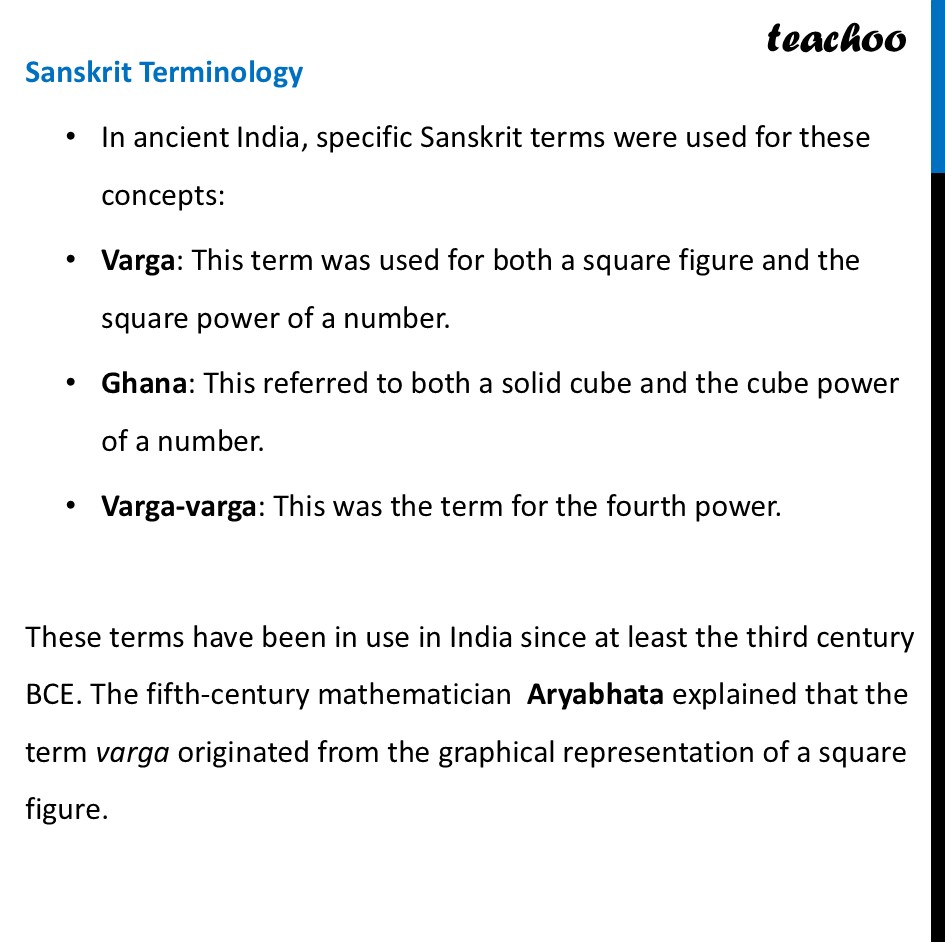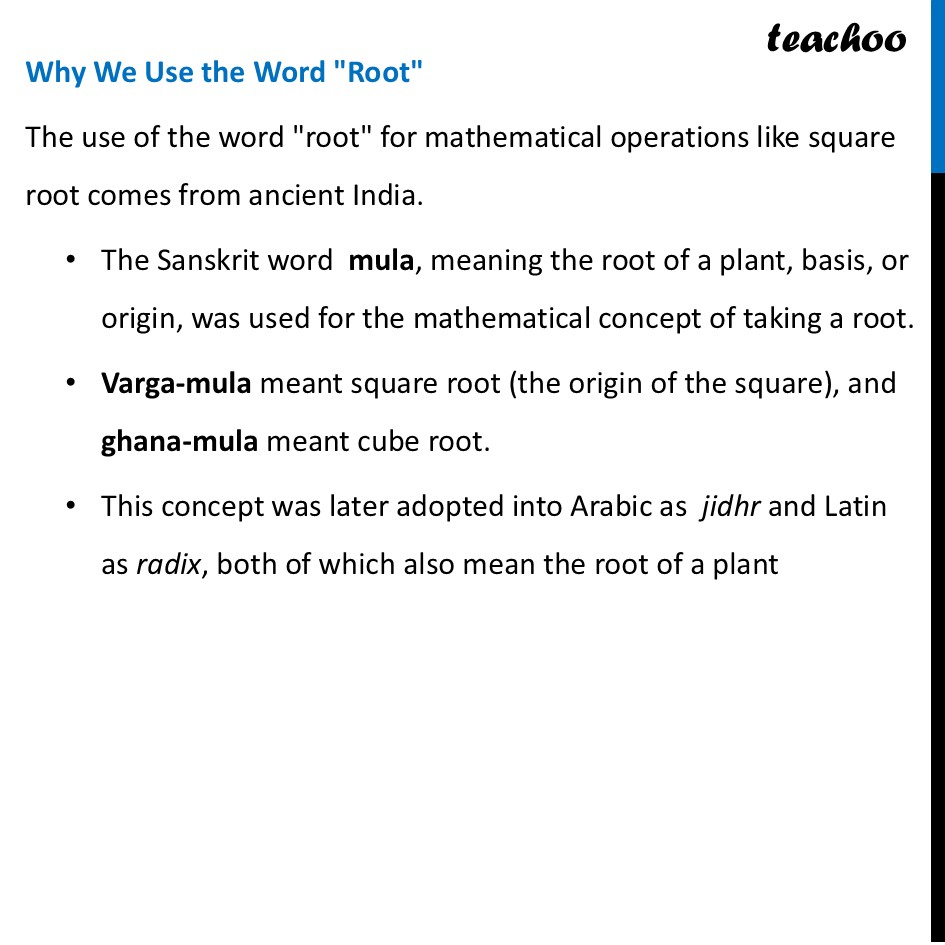


A pinch of History
Last updated at July 30, 2025 by Teachoo



Transcript
History of Square and Cube Numbers Based on the text, here is a summary of the history of squares, cubes, and roots. Ancient Origins The earliest known lists of perfect squares and perfect cubes were created by the Babylonians around 1700 BCE. These lists, found on clay tablets, were practical tools used for calculations in land measurement and architectural design. Sanskrit Terminology In ancient India, specific Sanskrit terms were used for these concepts: Varga: This term was used for both a square figure and the square power of a number. Ghana: This referred to both a solid cube and the cube power of a number. Varga-varga: This was the term for the fourth power. These terms have been in use in India since at least the third century BCE. The fifth-century mathematician Aryabhata explained that the term varga originated from the graphical representation of a square figure. Why We Use the Word "Root" The use of the word "root" for mathematical operations like square root comes from ancient India. The Sanskrit word mula, meaning the root of a plant, basis, or origin, was used for the mathematical concept of taking a root. Varga-mula meant square root (the origin of the square), and ghana-mula meant cube root. This concept was later adopted into Arabic as jidhr and Latin as radix, both of which also mean the root of a plant